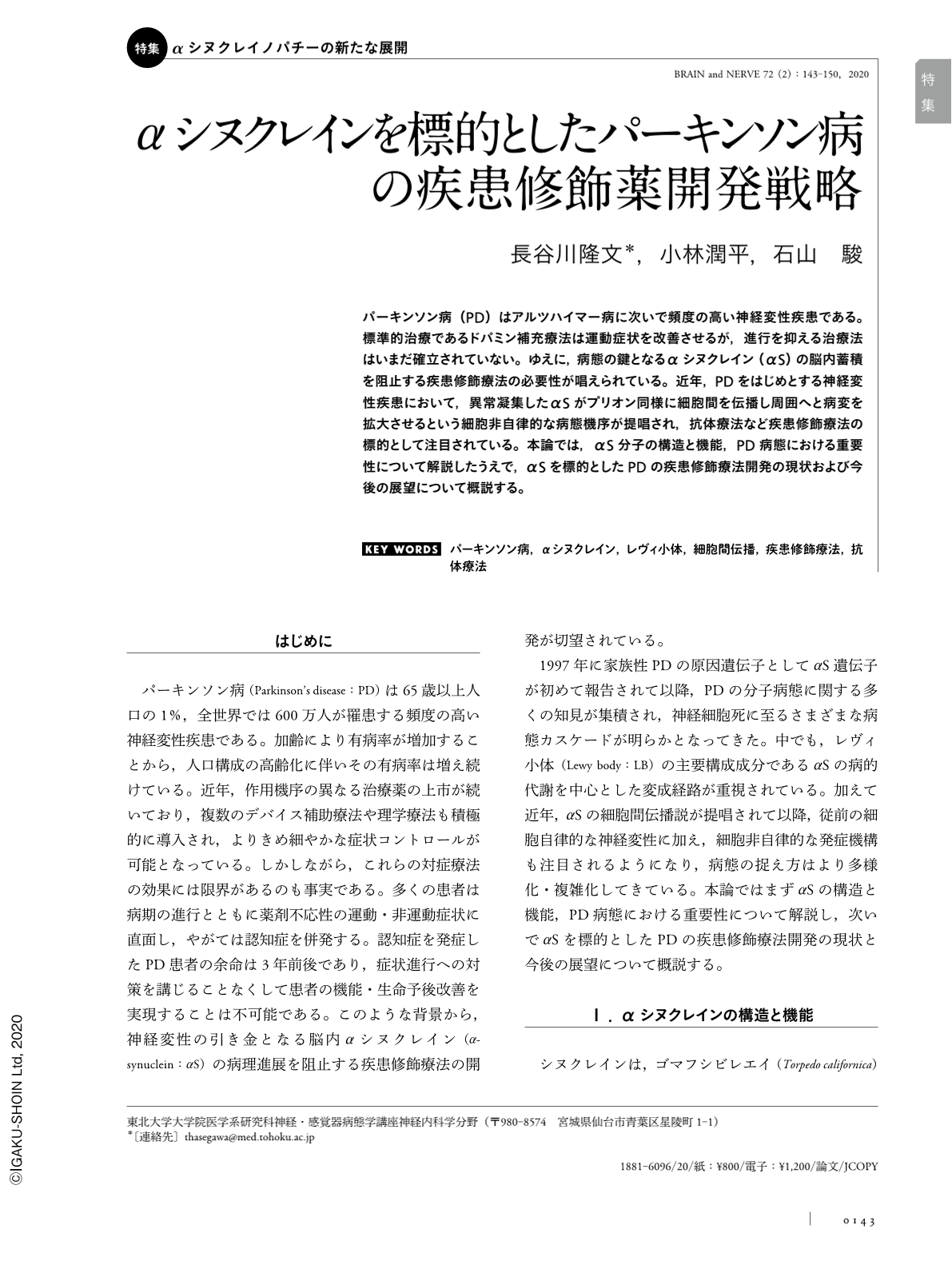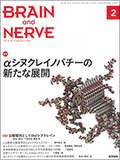Japanese
English
- 有料閲覧
- Abstract 文献概要
- 1ページ目 Look Inside
- 参考文献 Reference
パーキンソン病(PD)はアルツハイマー病に次いで頻度の高い神経変性疾患である。標準的治療であるドパミン補充療法は運動症状を改善させるが,進行を抑える治療法はいまだ確立されていない。ゆえに,病態の鍵となるαシヌクレイン(αS)の脳内蓄積を阻止する疾患修飾療法の必要性が唱えられている。近年,PDをはじめとする神経変性疾患において,異常凝集したαSがプリオン同様に細胞間を伝播し周囲へと病変を拡大させるという細胞非自律的な病態機序が提唱され,抗体療法など疾患修飾療法の標的として注目されている。本論では,αS分子の構造と機能,PD病態における重要性について解説したうえで,αSを標的としたPDの疾患修飾療法開発の現状および今後の展望について概説する。
Abstract
Parkinson's disease (PD) is the second most common neurodegenerative disease after Alzheimer's disease. Although the standard dopamine replacement therapy can alleviate motor symptoms, presently there is no available treatment to stop or reverse disease progression. Thus, there is an urgent need for the development of novel disease-modifying therapies to prevent the accumulation of cytotoxic α-synuclein (αS), a protein involved in PD pathogenesis, in the nervous system. Furthermore, emerging evidence suggests that the toxic αS species can move from one cell to another, thereby affecting the normal physiological state of the neighboring cells in a prion-like manner. The transmissible, extracellular αS is considered to be an ideal target for the disease-modifying treatments including antibody-based therapy. In this review, we will describe the molecular structure and functions of αS, its relevance to PD pathogenesis, and will discuss the current status and future perspectives of disease-modifying strategies targeting αS in PD.

Copyright © 2020, Igaku-Shoin Ltd. All rights reserved.


